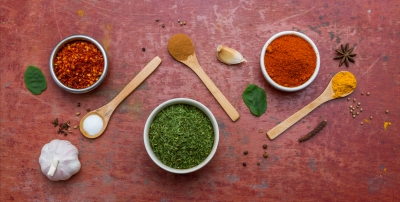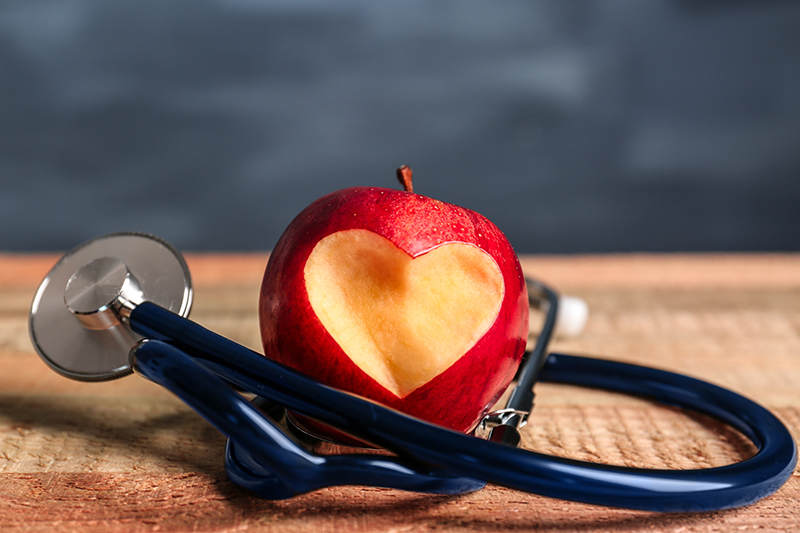10 Heart Healthy Cooking Tips
 With some heart healthy cooking, you can still enjoy delicious meals on a heart healthy diet. Plus, you don’t have to follow some strict “diet”. Many times you just need to tweak what you are already eating.
With some heart healthy cooking, you can still enjoy delicious meals on a heart healthy diet. Plus, you don’t have to follow some strict “diet”. Many times you just need to tweak what you are already eating.
Here are 10 tips for heart healthy cooking.
#1 Replace processed grains with whole grains
This involves more than just switching to whole grain bread. Select whole-wheat flour, whole cornmeal, quinoa, and oatmeal to boost fiber intake. Also, look at the pasta and rice your purchase. Select whole grain pasta and brown rice for heart health. Some whole grain products take a little bit longer to prepare than their processed counterparts. Keep this in mind as you make the switch.
#2 Eliminate salt and watch for hidden sodium sources
Many canned and processed foods are high in added sodium. Read labels and select options that have “No Added Salt”. You can also reduce sodium content of canned vegetables by rinsing them in cold water prior to preparing. Take the salt shaker off the table to break a habit of salting your foods before you even try them.
#3 Eat more fruits and vegetables
Prepare well balanced meals that include plenty of fruits and vegetables. Every meal should have a fruit and/or vegetable and it’s okay to eat more than one serving. The DASH (Dietary Approaches to Stop Hypertension) Diet recommends 4-5 vegetables each day AND 4-5 servings of fruit daily.
#4 Use nonfat yogurt in place of sour cream Continue reading
How to Stock a Heart Healthy Kitchen
 If you keep heart healthy foods on hand and easily accessible you will be much more likely to see success in your efforts to lower cholesterol and blood pressure. If you keep unhealthy foods within reach you will make it much harder to achieve your heart health goals. Don’t rely on will power! Stock you kitchen for success. Here are some essentials to keep on hand:
If you keep heart healthy foods on hand and easily accessible you will be much more likely to see success in your efforts to lower cholesterol and blood pressure. If you keep unhealthy foods within reach you will make it much harder to achieve your heart health goals. Don’t rely on will power! Stock you kitchen for success. Here are some essentials to keep on hand:
Whole grains, such as barley, oats, rice, buckwheat, and quinoa, are rich in fiber, antioxidants, vitamins, and minerals. These nutrient dense grains promote a healthy heart.
Olive oil
Continue reading
Heart Health: Are you selecting whole grains?
 By selecting whole grains you consume more nutrient dense foods that provide higher fiber content . . . all of which equals a heart healthy choice. Whole grain products contain all layers of the whole grain – the bran, the germ, and the endosperm. When it comes to selecting whole grains, you have many more options than just being sure to grab 100% whole wheat bread when grocery shopping. There are many whole grain varieties available to you.
By selecting whole grains you consume more nutrient dense foods that provide higher fiber content . . . all of which equals a heart healthy choice. Whole grain products contain all layers of the whole grain – the bran, the germ, and the endosperm. When it comes to selecting whole grains, you have many more options than just being sure to grab 100% whole wheat bread when grocery shopping. There are many whole grain varieties available to you.
Oats
Oats almost never having the bran or germ removed during processing. This means when you read a food label and see oats or oat flour listed as an ingredient, it’s safe to know this is a whole grain ingredient. Oatmeal has been linked to lower cholesterol levels.
Continue reading
5 Steps to Achieve a Healthy Heart

You don’t have to begin a drastic diet in order to achieve your heart health goals. Big results can be achieved by improving your daily habits one step at a time.
Here are 5 steps you can implement now for a healthy heart:
Step 1 – Add fruits and vegetables to your daily diet
That’s right, I’m not telling you to eliminate a food, but to add foods. Fruits and vegetables are essential. Add fruit and/or vegetable to every meal or snack to boost your intake of this necessary food group. It’s estimated that our intake of vegetables is usually only 59% of what it should be and fruit only 42%.
Step 2 – Switch processed grains for whole grains
Continue reading
Lower Blood Pressure with Whole Grains
The long running Health Professional Follow-Up Study has released new findings. The study found men who eat a high level of whole grains to be 19% less likely to develop high blood pressure compared to those eating the lowest levels of whole grains. The individuals with lower risks of developing high blood pressure consumed 52 grams of whole grains daily versus only 3 grams in the lower whole grain group.
Even though this study focused on men, similar results are being seen for women in the Women’s Health Study.
A few possible reasons increasing your intake of whole grains may prevent high blood pressure include better insulin sensitivity, lower blood sugar, decreased food intake to higher feelings of satiety (fullness).
Current whole grain recommendations are 85 grams per day.
How many grams of whole grains do you think you consume each? Do you have ideas for how you can increase your intake?
All the best,
Lisa Nelson RD
7 Natural Ways to Lower Blood Pressure
http://www.lowerbloodpressurewithlisa.com
High Fiber Diet – Whole Grains Provide More Than Just Fiber
New research from the University of Scranton has identified a new benefit to eating a diet high in whole grains. They have found whole grain cereals and snacks to contain high levels of antioxidants, specifically polyphenols.
Whole grain cereals were identified to have the highest antioxidant levels with oat based cereals containing the high levels followed by corn and wheat.
As far as snacks, popcorn was rated high as it provided five times the level of antioxidants compared to all other snacks tested. More heavily processed snacks lost most of their antioxidant properties during production. Just remember, keep the butter and salt added to your popcorn minimal.
All the best,
Lisa Nelson RD
Heart Healthy Tips
http://www.hearthealthmadeeasy.com



